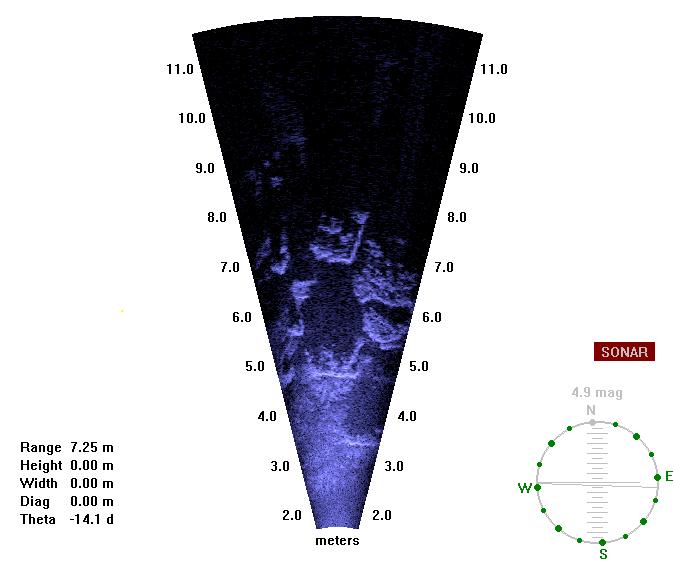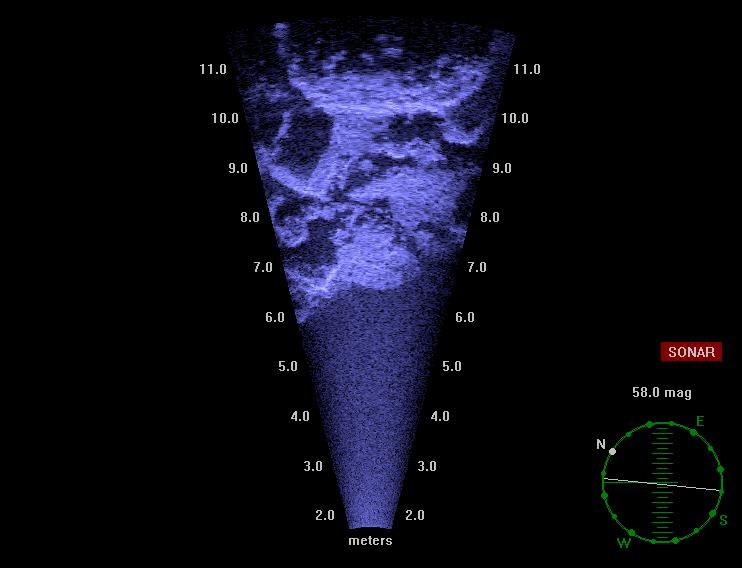Dunwich 2010
Seeing the ruins with sound
In June and July 2010, the first ever acoustic images of non-wreck marine archaeology were made with a diver-held DIDSON acoustic imaging camera (http://www.soundmetrics.com/). "The acoustic movie camera bridges the gap between medical ultrasound, which images the fingers of a fetus at a range of 10 cm, and a conventional sonar that images a shipwreck at ranges of 100’s of meters. The camera uses acoustic lenses that refract sound waves and focuses them in a similar way as light is focused with optical lenses. The result is an “acoustic movie” with more clarity and detail than seen in conventional imaging sonars. Acoustic movie cameras operate using a combination of high frequencies, acoustic lenses, very narrow beams, and high sampling rates to increase image detail." (Soundmetrics Website 2010) At Dunwich the DIDSON system was loaned to the project by MacArtney AS under guidance from Mike Sawkins. The survey was funded by the BBC who filmed the work for the One Show in June and for BBC Oceans in July. Conditions were perfect on both days and dives were made over St Katherines Chapel and St Nicholas church for the One Show, and over St Peter's Church and the site of Blackfriars Friary for BBC Oceans. Visibility on the seabed was less than 10cm. In June the divers, Andy Rose from Learn Scuba and the presenter Dan Snow, were able to record a series of short videos of the seabed. These clearly showed for the first time, the ruins of both structures. In July, the presenter Frank Pope was able to obtain the first DIDSON images of St Peters church and the site of Blackfriars. The latter showed some structure on the seafloor that matched those of the other known church sites sugesting that the the site probably is that of the Friary lost c. 1717.
The images are like the view you get when shining a torch at a low angle so that you get dark shadows cast by anything standing proud of the seabed. Details as small as 5cm were visible.The diver-held DIDSON feeds the acoustic images to a head-up-display visible to the diver through their dive mask. This permits archaeological investigations in zero-visibility environments, and opens up the turbid waters of the near shore zone around the north sea.
Upper - DIDSON image of squared blocks of worked stone from the ruins of St Nicholas Church. Lower - DIDSON IMage of St Peter's Church ruins.


